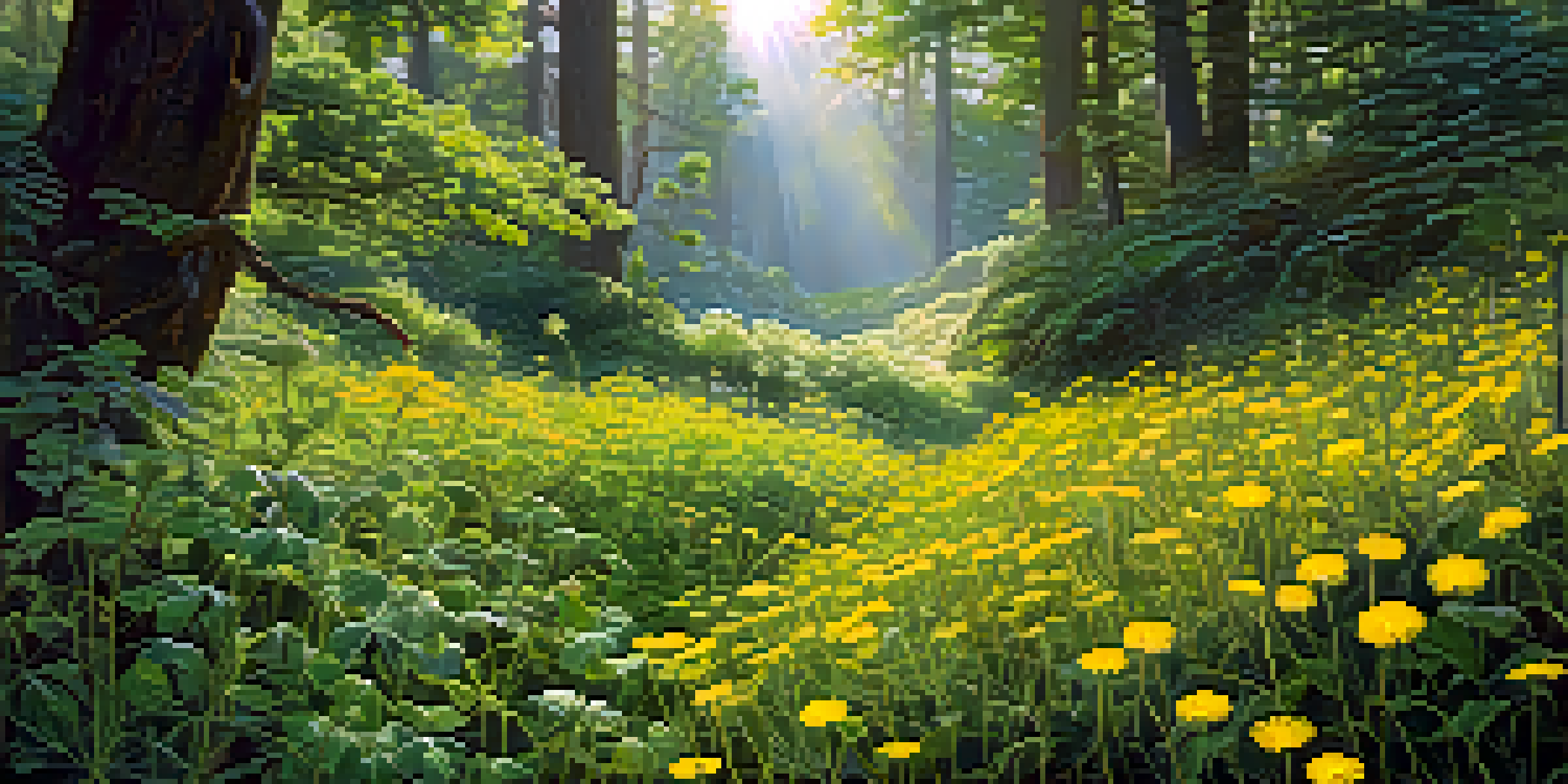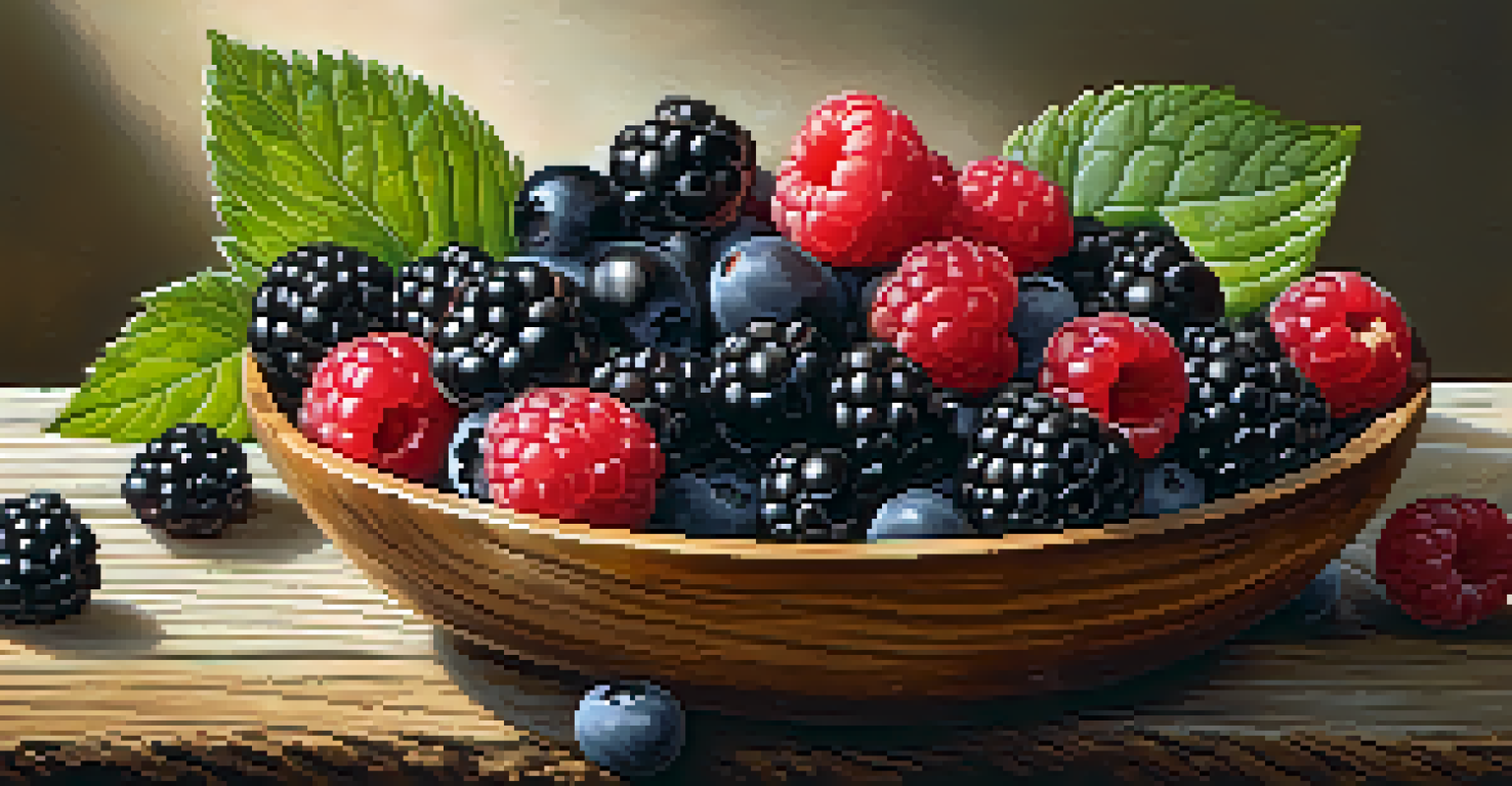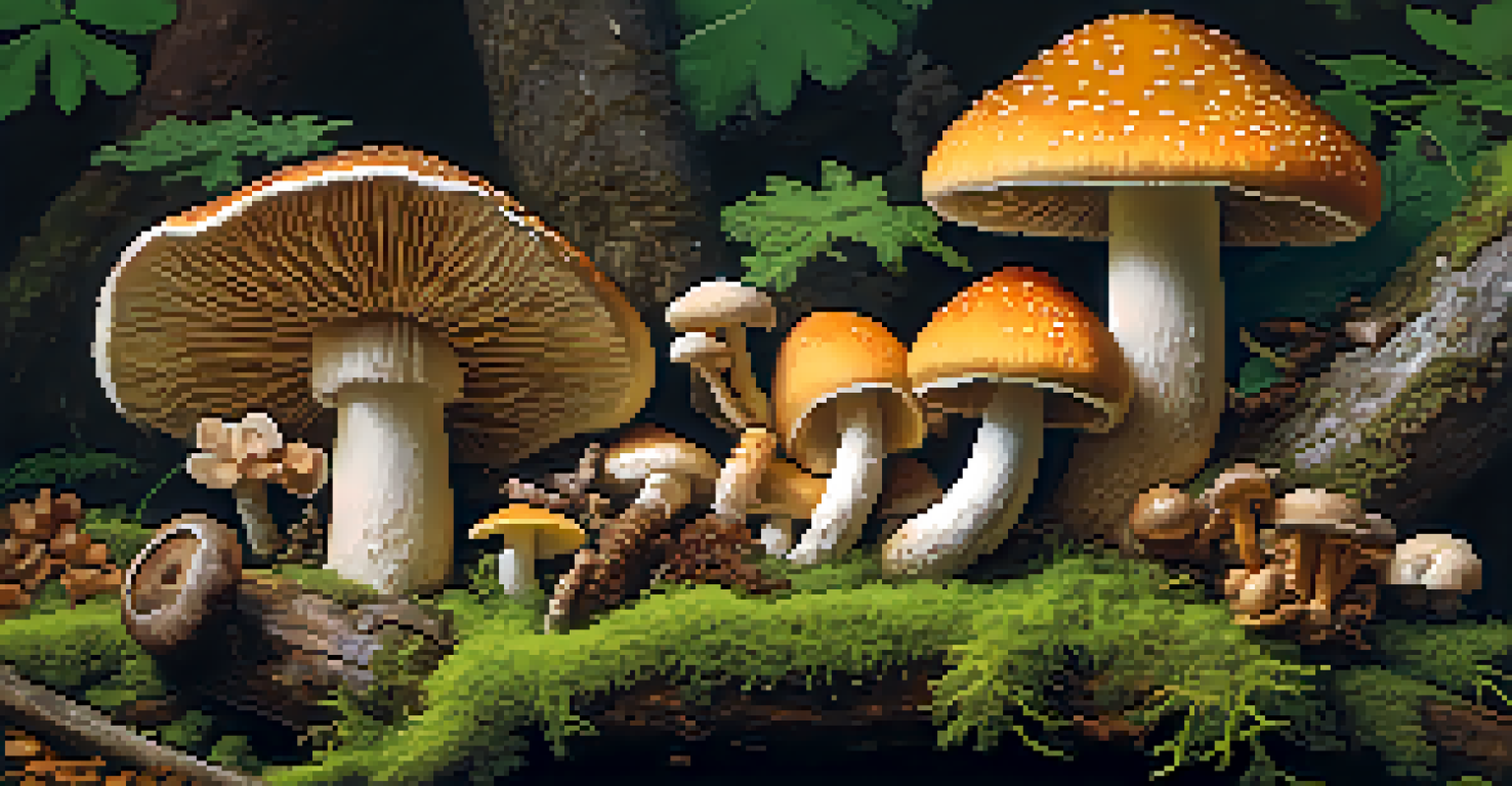Identifying Common Wild Edible Plants for Foraging

Understanding the Basics of Foraging for Edible Plants
Foraging is the act of searching for and gathering wild food. It's a rewarding way to connect with nature and discover delicious, free food options right in your backyard or local park. However, before you dive in, it's essential to understand the basics of foraging, including safety practices and ethical guidelines to follow.
Foraging is not just about food; it's about connecting with nature and understanding the ecosystem around us.
The first rule of foraging is to be 100% sure of what you're picking. Many edible plants have look-alikes that can be toxic, so always do your homework. A good field guide or app can be invaluable here, helping you differentiate between safe and unsafe plants while you're out in the wild.
Additionally, respect the environment by foraging sustainably. Only take what you need, and be mindful of where you’re harvesting. This way, you’re ensuring that these plants can continue to thrive for future foragers.
Getting Started: Essential Tools for Foraging
When you're ready to start foraging, a few essential tools can make the process easier and safer. A sturdy basket or bag is great for collecting your finds, while a small knife or scissors can help you cut plants without damaging their roots. A field guide specific to your region will also help you identify plants accurately.

Don't forget to bring gloves if you're foraging in areas with prickly plants or potential irritants. And while it might seem trivial, having a water bottle to stay hydrated is crucial, especially if you're hiking in warm weather.
Know What You're Foraging
Always be 100% certain of plant identification to avoid toxic look-alikes.
Lastly, a notebook can be helpful to jot down notes about the plants you discover, including their locations and characteristics. This will not only enhance your identification skills but also create a personal foraging log for future reference.
Recognizing Wild Edible Greens: Common Examples
Wild edible greens are some of the easiest plants to find and forage. Common examples include dandelion greens, which are rich in vitamins and can add a peppery flavor to salads, and lamb's quarters, known for their spinach-like taste. Both can be found in abundance in gardens and fields.
The best way to find yourself is to lose yourself in the service of others, and foraging is a way to serve nature by respecting and nurturing it.
Another great option is purslane, a succulent with a slightly tangy flavor that's perfect for adding to sandwiches or salads. You might also encounter chickweed, which has delicate leaves and is often used in fresh salads or as a herbal remedy.
Before consuming any wild greens, be sure to properly identify them and wash them thoroughly to remove any dirt or pests. Trying out new greens can be an adventurous way to expand your palate and get a taste of the wild.
Identifying Wild Berries: Delicious and Nutritious Picks
Berries are a forager's delight, and many wild varieties are not only tasty but also packed with nutrients. Blackberries and raspberries are common and can often be found along trails or in bramble patches. These juicy gems make great snacks or can be used in jams and desserts.
You might also come across blueberries, which grow on low bushes in forests and open areas. Just be sure you can distinguish them from their poisonous look-alikes, like the deadly nightshade. A reliable field guide can help you with this.
Forage Responsibly and Sustainably
Respect the environment by only taking what you need and ensuring plants can thrive for future foragers.
As with any wild berry, always wash them thoroughly before consuming. It's wise to taste just a small amount the first time, to check for any adverse reactions. Enjoying wild berries is a sweet reward for your foraging efforts!
Exploring Wild Roots and Tubers: Nutritional Powerhouses
Roots and tubers are often overlooked in foraging, but they can be incredibly nourishing. Commonly foraged species include wild garlic, which has a distinctive aroma and adds flavor to dishes, and dandelion roots, known for their health benefits and can be roasted for a coffee-like beverage.
Another notable mention is the burdock root, which can be found in many areas and has a crunchy texture. It's often used in Asian cuisine and is rich in antioxidants. Just remember to properly identify and prepare these roots before consuming them.
Harvesting roots requires a bit of digging, so make sure you have the right tools and only take what you need. This not only ensures the plant can regrow but also maintains the ecosystem's balance.
Mushrooms: The Fungi Frontier of Foraging
Foraging for mushrooms can be both exciting and daunting. While they offer unique flavors and textures, many mushrooms are toxic, making proper identification crucial. Familiarize yourself with common edible varieties, such as morels and chanterelles, which are often highly sought after by foragers and chefs alike.
Investing in a good mushroom guide or joining a local foraging group can enhance your knowledge and confidence. Many regions offer guided foraging tours where you can learn from experienced foragers, which can be an invaluable resource.
Prioritize Safety When Foraging
Educate yourself on toxic plants and introduce new wild edibles slowly to avoid allergic reactions.
Always remember the golden rule of mushroom foraging: when in doubt, throw it out. It's better to enjoy a safe meal than risk an unpleasant or dangerous experience!
Safety First: Avoiding Toxic Plants and Allergens
Safety is paramount when it comes to foraging. While the allure of wild edibles is strong, it’s essential to educate yourself on toxic plants that can cause illness or even be life-threatening. Common toxic plants include poison ivy, hemlock, and certain types of mushrooms, so always verify what you’re picking.
Allergies are another concern; some people may react to certain wild edibles even if they are generally safe. It’s wise to introduce new foods slowly and in small quantities, allowing your body to adjust.

To minimize risks, always forage in clean, unpolluted areas away from roadsides and industrial sites, where plants may absorb harmful substances. By being cautious and informed, you can enjoy the bounty of nature safely.